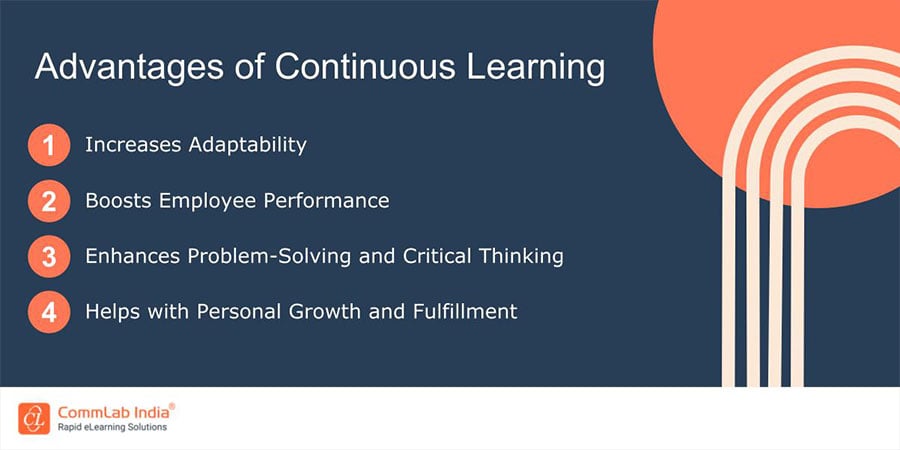9 Reasons Why Organizations Shouldn’t Ignore Digital Fluency

Do your employees think floppy disks are a viable storage option? Do they still refer to social media as “Facebook”? Well, if that’s the case, then it’s time for all the training managers to brush up on the digital fluency skills of their employees, or risk them being left behind in the digital dust! Digital fluency refers to the ability to use various technologies effectively and efficiently to communicate, collaborate, and create. In today’s fast-paced digital world, organizations can’t afford to ignore the importance of digital fluency. If your employees are still sending faxes and using dial-up internet, it’s time to step into the 21st century. Otherwise, they might find themselves as relevant as a VHS tape in a streaming world.
Is Your Organization Focusing on Employees’ Digital Fluency Skills?
Here are a few reasons that they should, if they aren’t already!
- Improves communication
- Boosts productivity
- Promotes collaboration
- Helps gain a competitive advantage
- Fosters continuous learning
Read on to explore various best practices to attain the necessary digital fluency skills.
So, put down that abacus and pick up a smartphone. Embrace the digital revolution and ensure that your colleagues/employees are not digital dinosaurs. The organization will be thankful, and who knows, they might even discover the joy of emojis! In this blog, you will explore nine reasons why digital fluency is essential in today’s workplaces and why you should extensively promote it.
9 Reasons Why Digital Fluency is a Vital Skill for Everyone
1. Improves Communication
Effective communication is critical in any workplace, and digital technologies have become a significant component of communication. Being digitally fluent enables individuals to communicate with colleagues, customers, and clients through various digital channels like email, instant messaging, and video conferencing. This ensures that communication is clear, efficient, and timely.
Check out the short video below to understand more about effective business communication.
2. Boosts Productivity
Digital fluency can boost productivity levels significantly. Digital tools like project management software, cloud storage, and automation tools can streamline work processes and reduce time spent on repetitive tasks. It ensures that employees can leverage these tools effectively and efficiently, resulting in increased productivity. Digital fluency can improve employee productivity by enabling them to work faster, collaborate more effectively, and access information more quickly. This increased productivity can lead to better business outcomes and competitive advantage.
3. Promotes Collaboration
Collaboration has become increasingly important in today’s workplaces, particularly in remote or hybrid work settings. Digital fluency enables individuals to collaborate effectively using digital tools like video conferencing, collaboration software, and cloud-based platforms. This fluency ensures that teamwork is seamless, productive, and efficient. It can enable employees to collaborate more effectively across teams and departments, regardless of their physical location. This collaboration can lead to better decision-making, increased innovation, and improved business outcomes.
4. Enables Innovation
Digital technologies have enabled new and innovative ways of working. Digital fluency enables individuals to use these technologies creatively, resulting in increased innovation in the workplace. This ensures that employees can leverage digital tools and technologies to develop new solutions, products, and services that drive business growth. Digital fluency can foster a culture of innovation within the organization by encouraging employees to experiment with new technologies and find new ways to solve problems.
→ Download eBook Now: Rapid eLearning Design for Quick Rollout
5. Enhances Flexibility
Digital fluency enables individuals to work remotely or from different locations without compromising productivity or collaboration. This ensures that employees can use digital tools and technologies to work flexibly and maintain work-life balance. Digital fluency can help employees adapt to changes in the workplace, such as the introduction of new technologies or changes in work processes. This adaptability can help the organization stay competitive in a rapidly evolving digital landscape. Also, with the ever increasing popularity of mobile learning, having digital fluency seems like a must-have skill.
6. Helps Gain a Competitive Advantage
Digital fluency can give businesses a competitive advantage by enabling them to use digital technologies to improve their products, services, and processes. This ensures that employees can leverage digital tools and technologies to gain a competitive edge and stay ahead of the competition. Also, as we can see the usage of AI technologies and tools is increasing every day, and gaining a competitive advantage is more crucial than ever.
7. Helps With Data Analysis
Digital technologies generate vast amounts of data that can be leveraged to gain insights into business operations. Digital fluency enables individuals to use data analytics tools to analyze and interpret data, resulting in data-driven decision-making in the workplace.
8. Improves Customer Engagement
Digital technologies have transformed the way businesses interact with customers. Digital fluency enables individuals to use digital channels to engage with customers, resulting in improved customer satisfaction and loyalty. It can enable employees to provide better customer experiences by using digital tools to communicate, personalize interactions, and respond to customer needs quickly.
9. Fosters Continuous Learning
Digital fluency requires individuals to continuously learn and develop new skills. This ensures that employees are motivated to learn and develop new skills, resulting in a more skilled and adaptable workforce. Digital fluency enables employees to work more efficiently by using digital tools to automate tasks, streamline workflows, and reduce errors. This increased efficiency can save time and resources for the organization.
How Training Can Help to Attain Competitive Digital Fluency
Training plays a crucial role in improving the digital fluency of employees in the workplace. Here’s how training can help with –
1. Closing Knowledge Gaps
Training programs can address the knowledge gaps that employees may have regarding digital technologies. It provides them with the necessary information, updates, and insights about various tools, software, and platforms.
2. Skill Development
Training sessions allow employees to develop and enhance their digital skills. From basic computer skills to advanced software proficiency, training programs can provide hands-on learning experiences that help employees become more proficient in using digital tools effectively.
3. Keeping Up With Technological Advancements
Technology is constantly evolving, and training ensures that employees stay up to date with the latest digital trends. It equips them with the knowledge and skills to adapt to new technologies, ensuring that they are prepared for the ever-changing digital landscape. One such technology is artificial intelligence, so as a bonus tip, help your employees about how various AI technologies work as well as introduce them to some AI tools that will help them with their daily work.
4. Best Practices and Efficiency
Training can teach employees the best practices for using digital tools, optimizing workflows, and improving efficiency. This knowledge empowers employees to leverage digital technologies effectively, saving time and resources in their day-to-day tasks.
Best Practices to Improve Digital Fluency of Your Employees
- Help them embrace new technology: Keep up with the latest digital tools and platforms by actively seeking out new technology and experimenting with it. Attend training sessions, workshops, and webinars to stay current on the latest trends and best practices in your industry. Make a habit of using digital tools regularly to develop and reinforce your digital fluency skills. Try to incorporate digital technologies into your daily workflow and use them to communicate, collaborate, and create content.
- Make them open to learning: Approach digital fluency as an ongoing learning process and be open to learning new skills and tools. Take advantage of eLearning courses and tutorials to improve your digital skills and knowledge. Work with colleagues or join online communities to share knowledge and collaborate on digital projects. This approach can help you learn new skills and approaches while building relationships with others in your field.
- Suggest them to seek feedback and be security-conscious: Request feedback from colleagues or supervisors on your digital fluency skills and areas for improvement. This feedback can help you identify gaps in your knowledge or skills and develop a plan to address them. Also, understand the potential security risks associated with digital technologies and take steps to protect your digital assets. Learn about password management, data backup, and safe browsing practices to keep your digital information secure.
Wrapping Up!
Digital fluency has become a critical skill in today’s workplaces. It enables individuals to communicate effectively, collaborate seamlessly, innovate, and remain competitive. As digital technologies continue to transform the workplace, digital fluency will become even more important, and individuals who develop this skill will be better equipped to thrive in the digital age. To enhance the digital skills of employees, you can utilize rapid eLearning to design various courses quickly. Here’s an insightful eBook that will help you understand how rapid eLearning can roll out courses efficiently without compromising on the quality.




![Top 10 Skills That Pay the Bills: Navigating the Future of Work [Infographic]](https://blog.commlabindia.com/hubfs/blogs/skills-success-future-work-info.jpg)
